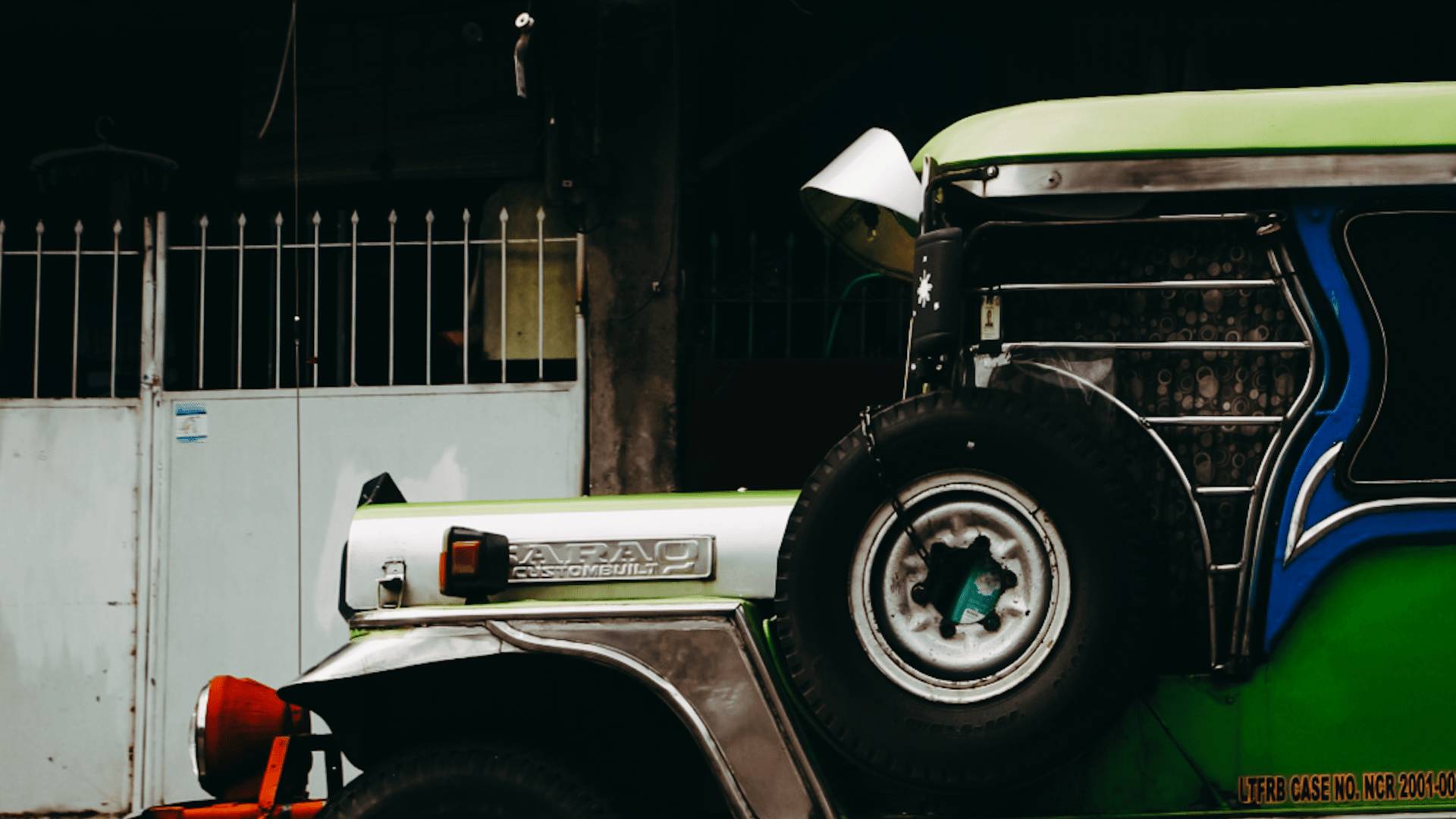Modernizing public transportation systems can result in increased economic productivity, job growth, and greater efficiency. By increasing the efficiency of public transportation, modernizing systems can reduce costs and improve services.
In the Philippines, this could take the form of changing traditional jeepneys into modern jeepneys and government intervention in terms of controlling the influx of car ownership. On the side of the masses, creating better routes for drivers could go a long way, especially in public utility vehicles.
When World War II ended, the train system was destroyed, and the Filipinos back then who tried to find ways secure new jobs had to convert "surplus" jeeps left by the Americans into a means of public transport. Our iconic jeepney is based on a nearly 80-year-old design.
The demand for jeepneys increased as more jobs became available. Commuters have been benefiting from these operations since. On the other hand, traditional jeepney drivers also have their share as they try their best to fend for their families.
What's in it for the people?
The jeepneys' planned "phase out" or modernization program incited transportation strikes. The jeepneys that needed to be replaced had been going on for a while. Modern vehicles are safer and cleaner for the environment. The upgrade is objectively necessary for sustainability. The phaseout of jeepneys is part of the larger plan called Public Utility Vehicle (PUV) Modernization. This government initiative was delayed numerous times due to multiple strikes from the transport sector.
Jeepney drivers, transport groups, and operators are not totally against the idea. However, the worry is on the high cost of buying these modern jeepneys, which is estimated to be around P1.3 million to P2.6 million. A few thousand pesos of gross earnings per day to chase that amount is a lot of work, especially for the PUV operators, drivers, and individual operators.
On the other hand, jeepney manufacturers had made efforts to prototype modern jeepneys, and the Philippine government had nodded. The relatively cheap modern jeepneys are an opportunity to revive and create demand for our jeepney manufacturing industry – similar to what we had in the past, like Sarao Motors, as the biggest cities around the Philippines had always been dominated by traditional jeepneys.
Better public transport and air pollution
The regulatory board would implement this to help Metro Manila in terms of taking good care of its air quality, as it had been neglected for years.
This can have a variety of economic impacts. Reduced wait time for commuters will lead to greater air, land, and water pollution controls, lower user costs, improved quality of life for people living near transit stations, and decrease road congestion, which results in reduced greenhouse gas emissions, health benefits, and more efficient land use.
Modern vehicles already exist in urban areas like the National Capital Region (NCR), but there are other problems in the highways that the regulatory board needs to solve. Buses, taxis, and cars are part of daily operations.
In metro manila, UV Express vans which were initially given the designated pickup and drop-off, began picking up passengers along the way. The government exhibited poor safety records, which affected passengers if they got into accidents. Modernization programs will make it easier for the government to hold people responsible.
On economic losses and cost
It is all the more important that the Philippines keep up with the growing demand for transportation as we work through urban development. The use of modern transportation systems can help reduce the environmental and social costs of commuting. This improves life for all citizens and makes it easier for people to get around their city.
Market control still needs to be exercised as the Philippines loses Billions because of heavy traffic conditions--so much cost that the country could not afford. This is a key element of smart city development. It can help improve communities' efficiency, safety, and resilience by modernizing our existing investments, creating innovative solutions, and enhancing competitiveness.
This action is also critical to the Philippines' efforts to expand infrastructure and economic development projects. Improving mobility, especially for the urban poor, provides an opportunity for those individuals with greater access to education and employment opportunities.
PUV and Jeepney modernization program
Public transit has many benefits that can be used to support the city's overall growth. This aimed to streamline and organize the country's public road transportation system. The introduction happened in June 2017.
It also encourages environmentally-friendly behavior by encouraging people to carpool or otherwise use public transportation instead of driving their own vehicles. Obviously, the Philippine government can only do its part. Industry consolidation, franchising, regulatory board, operators, new franchises, and the country must look into the bigger picture.
How are the Philippines going to do this?
PUVs will have an age limit.
No part of the vehicle can be older than 15 years. The program greatly approves a mini-bus by being strict in terms of size and capacity limitations. The uniform size will help prevent overloading.
"One route, one franchise policy."
At least 15 units of PUVs must form cooperatives or corporations registered with the LTFRB--individual operators are allowed. This way, the number of vehicles servicing a certain route is limited and easily monitored. Coops will have a team including the drivers, dispatchers, fleet managers, and so on. This fleet management method allows streamlined monitoring of earnings by knowing how many vehicles are en route to decide whether to hold or dispatch more vehicles.
Drivers will have salaries instead of earnings through the boundary system.
One is not allowed to drive for more than 12 hours just to chase funds. This increases road safety by managing driver fatigue.
Electronic fare collection system.
This is originally intended to allow profit sharing, regardless of the drivers' shift. This also reduces the task of a driver so that collecting money does not create distraction-- a good way to increase efficient driving and money collection.
Easing the acquisition of these vehicles.
With financial institutions' help, the government could grant loans at low interest. 5-6-7-8 Financing package is also placed. A 5-percent down payment will be required, at a 6-percent interest rate, which would take seven years to pay, and the government will offer as high as a P80,000 subsidy on each of the units.
All of these would mean a higher value of an investment in the cities involved. Although it is a lot to take in, it could help propel a better system compared to what we have in the past. The modernization program will create demand for more jobs, country infrastructure like rail lines, better road transport, and a better lifestyle for Filipinos.
For more information on Vista Residences, email [email protected], follow @VistaResidencesOfficial on Facebook, Twitter, Instagram, and YouTube, or call the Marketing Office at 0999 886 4262 / 0917 582 5167.










